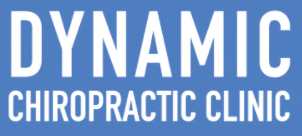About twice a week I see a patient who complains of “tailbone pain” at my downtown office. It’s actually called the coccyx bone, and it’s considerd to be a vestigial tail left over from our primate ancestry.
The bone, a triangular thing is usually roughly the size of a quarter, and has a rudimentary disc that attaches it to bottom bone of our spine, called the sacrum. The coccyx is an attachmment point for acouple muscles, and some ligaments as well. One of them, the pubococcygeus, gets it’s name from this bony attachment.
The long and short of this bone is that it can be pushed out of its normal alignment, either scooted up and under, or back and out. Either way is painful, as it is a sprain of the ligaments that hold the bone in place.
Diagnosis of the problem is pretty straighforward in my experience.. the patient will essentially tell you what happened. After all, we all know where our tailbone is! Xray pictures of the tailbone are often difficult to take in the office, and may only show that the two bones, the sacrum and coccyx, are touching each other. Extreme coccyx/ sacrum angles can be present without pain.
UP and UNDER
The anterior subluxation of the coccyx is the most common occurance, and usually occurs due to landing on the tailbone in a fall or sitting on a hard surface in a flexed position. Being hit hard here can also cause this, such as is seen from snowboarding or sledding. The extreme results of this are that the sufferer cannot sit down comfortably without a “doughnut” or “butt doughnut”.
Some pregnant mothers who have this condition actually bear children with a long red stripe down the front of the child’s head, due to the coccyx bearing on it!
Ways to fix it:
There are essentially three ways to deal with an anterior coccyx issue. One, the most direct, is to do what is called an “internal adjustment”. The doc gloves up, inserts their finger into the anus, and pulled out and back, taking the coccyx with it. This would appear to be the most direct method of dealing with this, if not the most graceful. Since there are all sorts of boundary issues with this, it’s not often done on opposite sex doctor patient teams, and if there is, it requires a staff person to be present for the adjustment. PLEASE NOTE THAT IN WASHINGTON, WE AS CHIROPRACTORS DO NOT PERFORM THIS ADJUSTMENT. MD’S AND DO’S, MAYBE EVEN NATUROPATHS DO THIS.
Tiffany: STOP CALLING. WE DON’T DO THIS ADJUSTMENT!
(Just kidding, there’s noone named Tiffany who keeps asking for this adjustment.)
The “external method” uses a drop piece table in the chiropractors office, and the doctor uses the surface tissues to attempt to drag the coccyx up, much like attaching a rope to it and pulling lengthwise. While maybe this method is not as effective each visit, it has the advantage of being more comfortable and does not require that staff be present in the office.
BACK and OUT
This subluxation is far more rare, but far easier to fix. Essentially, this is a condition where the chiropractor simply pushes the coccyx back “home” while the patient lays face down on the table. The adjustment is often painful, but because there are no complex physics going on, the results are often dramatically faster, and the prognosis is much better for full resolution of the symptoms.
CONCLUSION
All this said, there is a great chance that for your tailbone pain, chiropractic adjustments can be a viable alternative to sitting on the butt doughnut. Call us to help you. Dynamic Chiropractic Clinic , (206) 343-3325.
